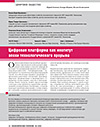Digital Platform as an Institution of the Technological Breakthrough Era
Keywords:
,
,
,
,
,
,
The article, for the first time in the domestic economic literature, presents results of the institutional-economic analysis of the unique phenomenon of the new technological order economy — digital platforms (DPs). Digital platform is positioned by the authors as a mediatory transaction institute (organizational attractor), functioning in a hybrid reality. Given the innovative nature of unique features inherent in the digital platforms and the lack of academic research on this topic, it can be stated that DPs are of particular interest for economic science and business practices.
References:
- Osipov Yu.M. Ekonomika kak est’ [Economy as It Is]. Moscow, TEIS, 2017.
- Evans D. 2003. The Antitrust Economics of Multi-Sided Platform Markets. Yale Journal on Regulation 20(2): 325–82.
- Rochet J.-C., Tirole J. 2003. Platform competition in two-sided markets. Journal of European Economic Association 1 (4). Pp. 990–1029.
- Martens B. 2016. An Economic Policy Perspective on Online Platforms. JRC Technical Reports. Institute for Prospective Technological Studies. Digital Economy Working Paper 2016/05.
- Evans P.S., Gawer A. 2016. The Rise of the Platform Enterprise: A Global Survey. The Emerging Platform Economy Series N 1. The Center for Global Enterprise.
- Parker G.G., Van Alstyne M.W., Choudary S.P. 2016. Platform revolution: How networked markets are transforming the economy and how to make them work for you. N.Y.: W.W. Norton & Company, Inc.
- Yudina T.N., Tushkanov I.M. Tsifrovaya ekonomika skvoz’ prizmu filosofii khozyaystva i politicheskoy ekonomii [Digital Economy Through the Prism of Business and Political Economy Philosophy]. Filosofiya khozyaystva, 2017, no 1 (109), pp. 193–201.
- Auzan A.A. Institutsional’naya ekonomika: novaya institutsional’naya ekonomicheskaya teoriya [Institutional Economics: New Institutional Economic Theory]. Pod red. A.A. Auzana. Moscow, INFRA-M, 2005.
- Yablonskiy S.A. Mnogostoronnie platformy i rynki: osnovnye podkhody, kontseptsii i praktiki [Multilateral Platforms and Markets: Basic Approaches, Concepts and Practices]. Rossiyskiy zhurnal menedzhmenta, 2013, no 4, pp. 57–78.
- Roth A.E. 2007. The Art of Designing Markets. Harvard Business Review, vol. 85, no 10, p. 118.
- Clements M. T., Ohashi H. 2005. Indirect network effects and the product cycle. 1994–2002. Journal of Industrial Economics, no 53 (4), pр. 515–542.
- Evans D.S. 2003. Some empirical aspects of multi-sided platform industries. Review of Network Economics, no 2 (3), pp. 191–209.
- Katz M., Shapiro C. 1985. Network externalities, competition, and compatibility. American Economic Review, no 75 (3), pp. 424–440.
- Parker G., Van Alstyne M. 2005. Two-sided network effects: A theory of information product design. Management Science, no 51 (10), pp. 1494–1504.
- Caillaud B., Jullien B. 2003. Chicken and egg: Competition among intermediation service providers. RAND Journal of Economics, no 34 (2), pp. 309–328.
- Saarikko T. 2015. Digital platform development: A service-oriented perspective. ECIS 2015 Completed Research Papers (152).
- Tiwana A. 2014. Platform Ecosystems Aligning Architecture, Governance, and Strategy. Morgan Kaufmann Publishers Inc.
- Gawer A. 2014. Bridging Differing Perspectives on Technological Platforms: Toward an Integrative Framework. Research Policy, no 43(7), pp. 1239–1249.
- Filistrucchi L., Geradin D., van Damme E., Affeldt P. 2014. Market definition in two-sided markets: Theory and practice. Journal of Competition Law & Economics, vol. 10, Issue 2, pp. 293–339.
- Shastitko A.E., Parshina E.N. Rynki s dvustoronnimi setevymi effektami: spetsifikatsiya predmetnoy oblasti [Markets with Double-Sided Network Effects: Subject Area Specification]. Sovremennaya konkurentsiya, 2016, t. 10, pp. 5–18.
- Eisenmann T.R. 2008. Managing proprietary and shared platforms. California Management Review, no 50 (4), pp. 31–53.
- Hagiu A., Wright J. 2011. Multi-Sided Platforms. Harvard Business School Working Paper, no 12–024



